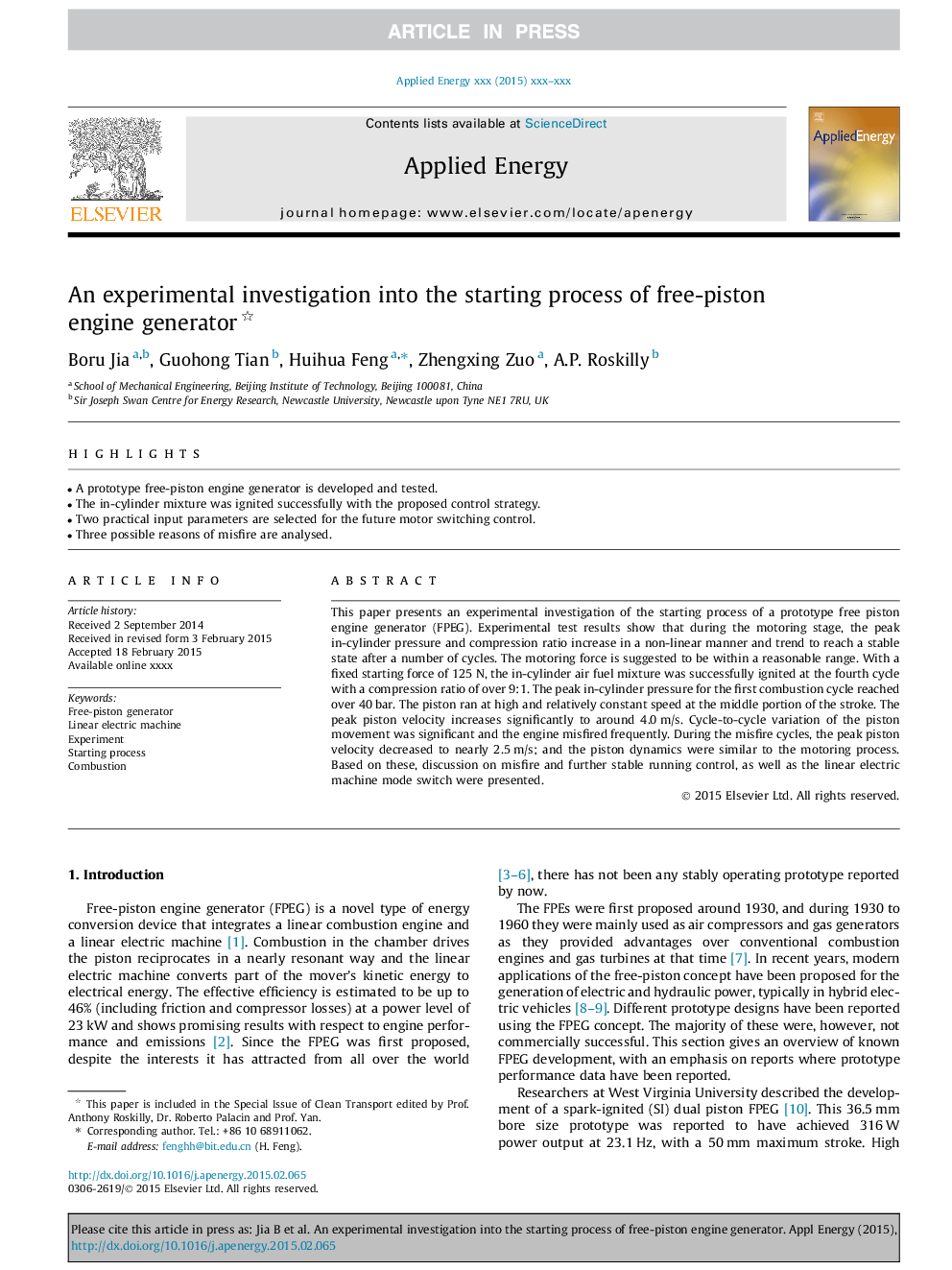| Article ID | Journal | Published Year | Pages | File Type |
|---|---|---|---|---|
| 6686092 | Applied Energy | 2015 | 7 Pages |
Abstract
This paper presents an experimental investigation of the starting process of a prototype free piston engine generator (FPEG). Experimental test results show that during the motoring stage, the peak in-cylinder pressure and compression ratio increase in a non-linear manner and trend to reach a stable state after a number of cycles. The motoring force is suggested to be within a reasonable range. With a fixed starting force of 125Â N, the in-cylinder air fuel mixture was successfully ignited at the fourth cycle with a compression ratio of over 9:1. The peak in-cylinder pressure for the first combustion cycle reached over 40Â bar. The piston ran at high and relatively constant speed at the middle portion of the stroke. The peak piston velocity increases significantly to around 4.0Â m/s. Cycle-to-cycle variation of the piston movement was significant and the engine misfired frequently. During the misfire cycles, the peak piston velocity decreased to nearly 2.5Â m/s; and the piston dynamics were similar to the motoring process. Based on these, discussion on misfire and further stable running control, as well as the linear electric machine mode switch were presented.
Keywords
Related Topics
Physical Sciences and Engineering
Energy
Energy Engineering and Power Technology
Authors
Boru Jia, Guohong Tian, Huihua Feng, Zhengxing Zuo, A.P. Roskilly,
